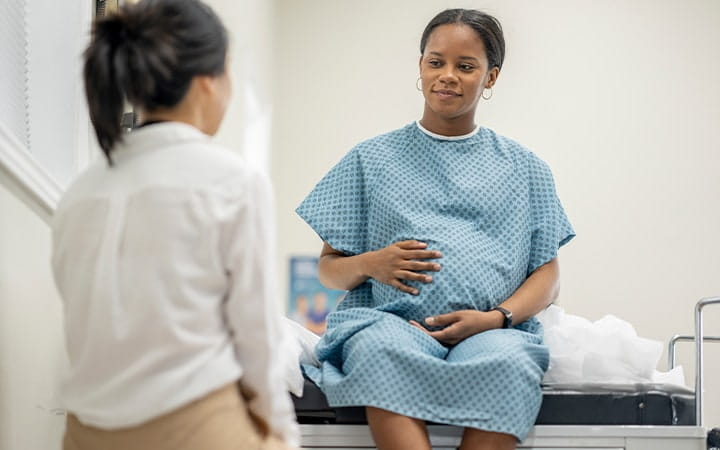These Pregnancy Complications Are More Common Than You Think
October 31, 2023
 University Hospitals Rainbow Babies & Children'sExperts in Children's Health
University Hospitals Rainbow Babies & Children'sExperts in Children's Health

As a mom-to-be, you probably hear a lot about morning sickness. But how much have you heard about hyperemesis gravidarum, preeclampsia and gestational diabetes?
“These less-discussed pregnancy issues are more common than you might think,” advises Christopher Nau, MD, maternal fetal medicine specialist at University Hospitals. “That’s why it’s important to know what to watch for. If they happen to you, prompt care is the key to a healthier pregnancy and safer delivery for you and your baby.”
Here’s how to be prepared to recognize these pregnancy complications.
Hyperemesis Gravidarum (HG)
HG is severe nausea and vomiting during pregnancy – worse than ordinary morning sickness. It occurs in up to 3 percent of pregnancies.
Contact your provider if you experience:
- Nausea that doesn’t go away
- Vomiting several times each day
- Weight loss
- Decreased appetite
- Lightheadedness or fainting
- Dehydration (loss of body fluids), which may cause dark-colored urine or inability to urinate
Early treatment helps keep HG from worsening. Options include a bland diet, IV fluids, and anti-nausea medicine. Some women need hospitalization to stop the vomiting and restore body fluids.
Preeclampsia
Preeclampsia is a sharp rise in blood pressure after mid-pregnancy that is accompanied by problems with the kidneys or other organs. It occurs in about 4 percent of pregnancies.
“Preeclampsia is often found during prenatal screenings that look for high blood pressure and protein in your urine, but there are signs that are cause for concern if you have them,” says Dr. Nau. While these symptoms alone may not indicate preeclampsia, they should prompt an evaluation. Contact your provider if you develop:
- Swelling of your hands and face
- Pain in your upper belly or shoulder
- Changes in vision or seeing spots
- A headache that won’t go away
- Sudden weight gain
- Difficulty breathing
Preeclampsia can be a dangerous complication, but the right prenatal care reduces the risks. When needed, labor can be induced with medication.
Gestational Diabetes
This refers to diabetes that starts during pregnancy in a woman who didn’t have it before. It occurs in 2 to 10 percent of pregnancies each year.
Gestational diabetes is typically found by prenatal screening tests for high blood sugar – the hallmark of diabetes. “This usually begins around mid-pregnancy, though it can sometimes occur in early pregnancy. You might not have any symptoms, but tell your provider if you develop extreme thirst, hunger, or fatigue,” says Dr. Nau.
Work with your provider to control your blood sugar. That may involve following a healthy meal plan, getting appropriate exercise, and checking your blood sugar frequently. If needed, your provider can prescribe insulin.
Related Links
Led by nationally recognized maternal fetal specialists, genetic counselors and neonatologists, the high-risk pregnancy team at University Hospitals provides exceptional care for pregnant women, from the moment a condition is diagnosed, through pregnancy, delivery and the post-partum period. Learn more.


